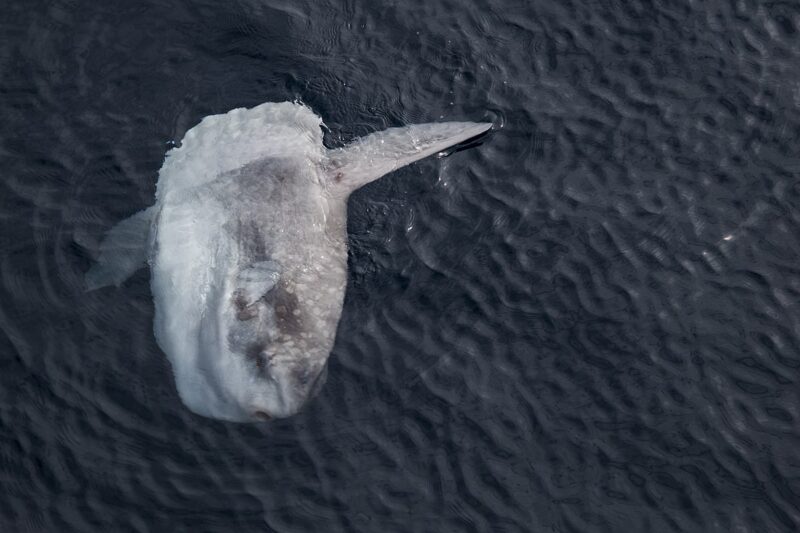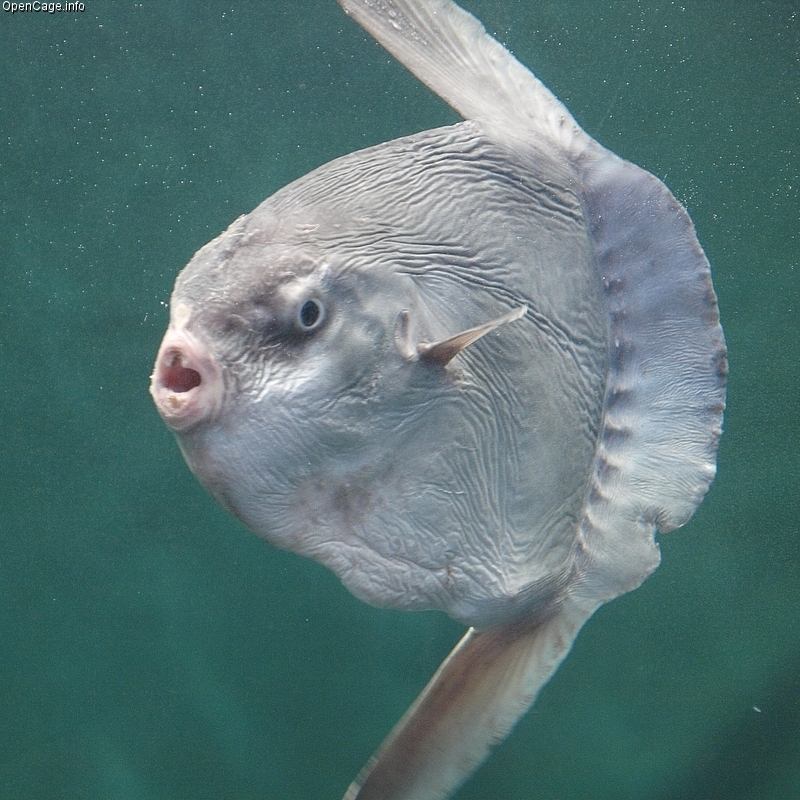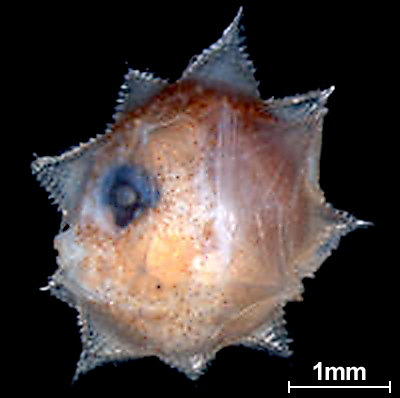An ocean sunfish. Image via Per-Ola Norman/ Wikipedia (public domain).
The ocean sunfish or Mola mola is a large and odd-looking fish. They’re surely one of the weirdest looking fish in the ocean. But, you know, normal is boring, so we love them as they are! It’s certainly one of my favorite fish, ever since I first saw this enormous, unique animal at the Oceanografic in Valencia, Spain. I was impressed after seeing a fish bigger than I am, and I’m 5’8″ (1.73 m) tall!
EarthSky lunar calendars are back in stock! We’re guaranteed to sell out, so get one while you can.
What are ocean sunfish?
This enormous animal is the heaviest bony fish in the world. For years, many people believed that this huge fish got energy from the sun. How else could it get so big?! That’s how it got its name. You can see these fish flopping around at the surface of the sea. In Spanish, they’re called “peces luna” or moonfish. According to a legend, when fishermen went fishing in the night, they got confused and thought these gray-white fish were the reflection of the moon in the water.

So, they love the surface, but they also get stuck there … And, who can blame them? They are huge and have no pelvic fin. They do have a back fin, though, but it never grows. Large specimens can reach 14 feet (4 m) vertically and 10 feet (3 m) from mouth to fan-shaped “tail.” And they can weigh nearly 5,000 pounds (2,300 kg). The largest ever discovered was 6,050 pounds (2,750 kg). It was 12 feet (3.6 m) tall and 10.5 feet (3.2 m) long.
There are five species of ocean sunfish: The Mola mola, the Mola alexandrine, the Mola tecta, the sharp-tailed mola, and the slender mola. You can find them worldwide in the open ocean of tropical and temperate seas. Although they might look ancient or prehistoric, the truth is they’re newcomers to our planet. The first fish on Earth emerged over 500 million years ago, but the Molidae family emerged only 50 million years ago. In fact, molas are one of the most recent fish to appear in the sea.
What do they look like?
To some, this fish looks like half its body is missing. Some people nickname them swimming heads. To me, they look like the bullets from Super Mario; remember them? Their spines are truncated and don’t have ribs. Their back fins never grow; instead, they fold on themselves. This creates a round section at the back of the body, called a clavis. They also lack a pelvic fin. And their pectoral fins are small and round; they’re tiny if you compare them with the massive dorsal and anal fins.

One of the most surprising things about the mola is that it doesn’t have any axial muscles. In other fish, these muscles run down the length of the body and are used to flex the body laterally (side to side). They also allow the fish to swim forward. So, without these essential muscles, how do sunfish even swim? They have enlarged muscles around their dorsal and anal fins, which flap simultaneously, propelling the fish forward while their bodies remain almost completely rigid.
There is something curious about their main fins. They’re symmetrical, while in other fish, they’re asymmetrical. And also, although the fins’ structure is similar to that of other ocean flyers such as manta rays, penguins or turtles, sunfish are the only aquatic vertebrates with their wings in a vertical orientation.
Curious things about the ocean sunfish
It’s a weird animal, but does it move properly? It does! Sunfish can cruise at around 1.8 miles per hour (3 kph). So, not really fast, but they do their job. Also, as their fins are so big, they don’t need to flap fast or many times to create a lot of thrust. And sunfish can dive deep to search for prey during the day or to escape predators.
Their skin is very different from other fish, too. They don’t have scales; these fish are covered by a thick hypodermis that is inflexible and rubbery. It’s made up of collagen and elastin. We could even say this skin serves them as an exoskeleton to protect against sharks, sea lions and orcas.
Ocean sunfish can jump out of the sea and slam their bodies back into the water. In this way, they dislodge parasites from their skin. The poor things have so many parasites that even their parasites can have parasites. While on the surface, they allow birds to pull parasites from their skin. They also visit reef environments to give other fish a chance at the buffet. They’re such good big brothers! The reason they have all these parasites is because of their low speed.
What do they eat?
Sunfish migrate toward cooler waters in spring and summer to follow their prey of zooplankton. They also eat algae, small fish, squids, crustaceans, brittle stars and jellyfish. You don’t like jellyfish and their stings? Well, then these are your perfect buddies, as they quite like jellyfish.
Ocean sunfish have a beak-like mouth. They don’t chew their food; they push it back and forth through their beaks to break up their prey and swallow the smallest pieces. Of course, plastic is a huge threat to these peaceful animals, as it can lead to suffocation or starvation. The ocean sunfish always have their mouths open. These fish are unable to close them, and not because they are talkative; in fact, they are quite serene and solitary.

But that doesn’t stop them from having a large family. Female ocean sunfish can produce over 300,000,000 eggs at a time. Their larvae look like little spiky balls. As they grow, they develop the swimming head and lose the spikes.

Have you ever seen these gentle giants? They can live for more than 100 years. You have a friend for life in them.
Bottom line: Because normal is boring, we love this large and odd-looking fish! Read more about ocean sunfish, the gentle giants.
Seahorses are tiny, ravenous creatures: Lifeform of the week











